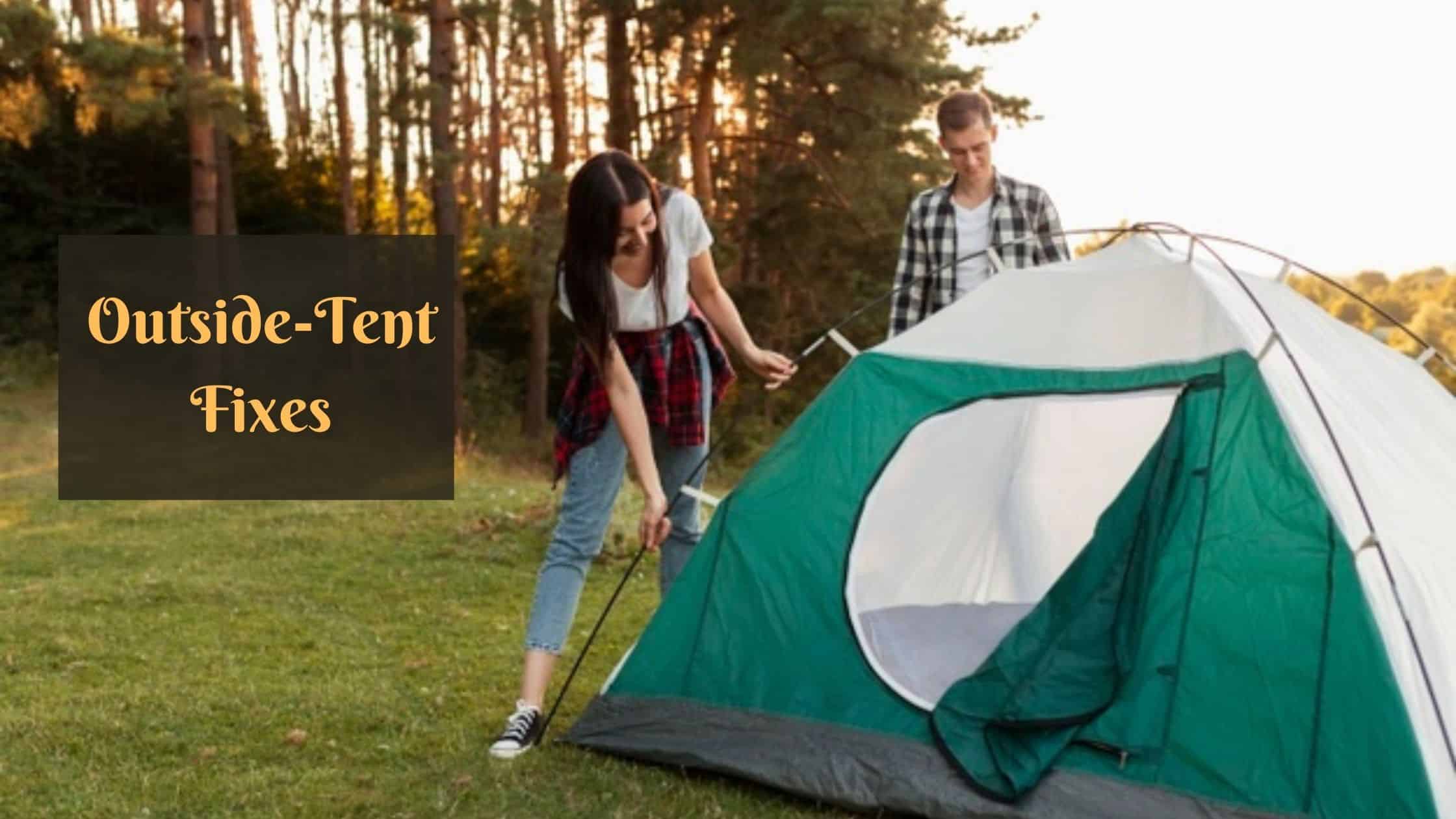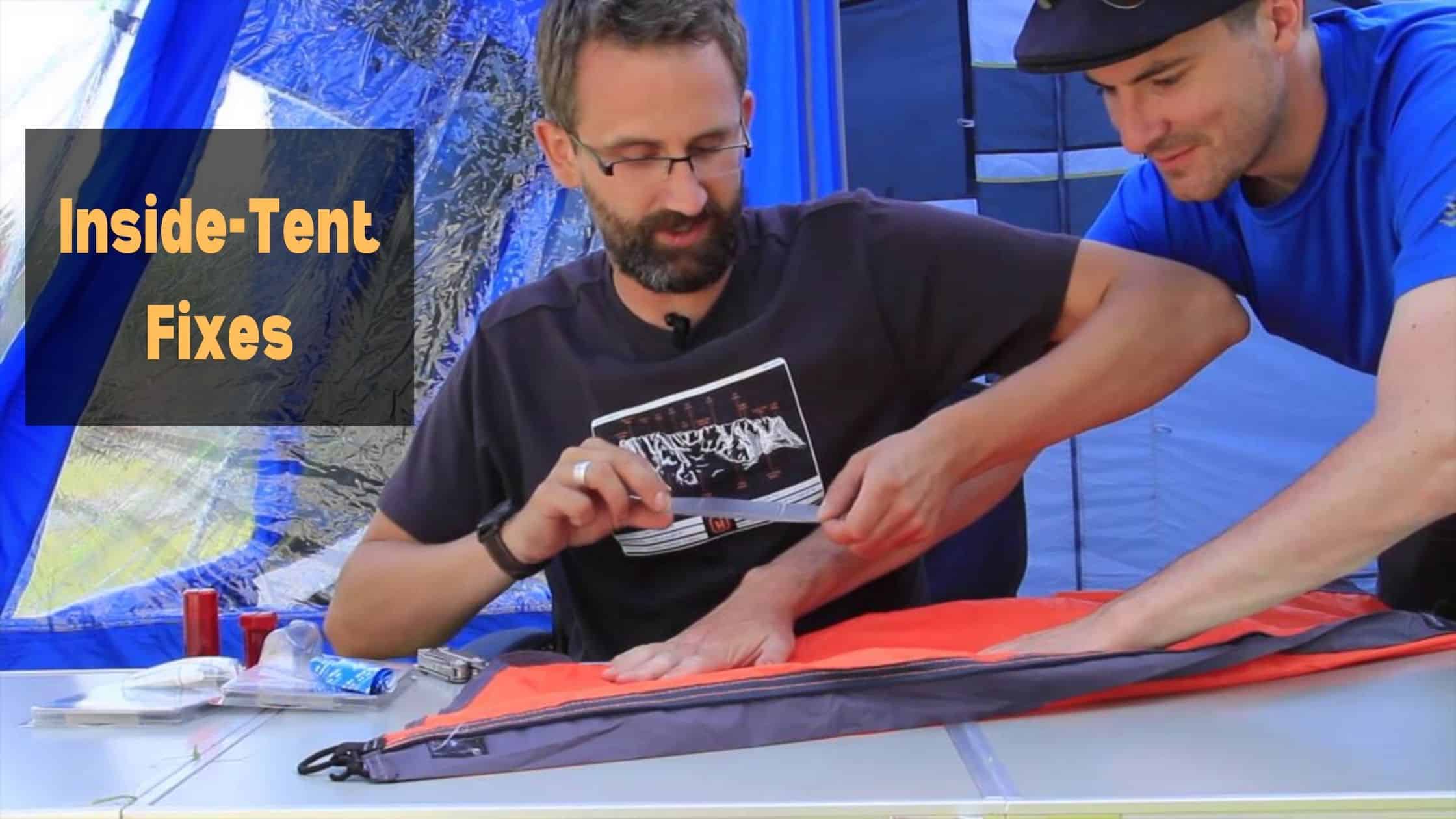How to Make a Tent Warmer
Whether you’re extremely sensitive to the cold or simply want to extend your camping season, it pays to know how to make a tent warmer. After all, a 4-season tent isn’t always practical, nor do you want to buy all-new gear for trips beyond your routine camping.
After consulting our camping experts, we’ve put together the best ways on keeping your tent warm. In summary, you should:
- Ensure that your tent is “airtight” to prevent heat loss.
- Add layers of insulation where necessary.
- Aim to stay dry, as sweat and condensation dispels heat.
Best Ways to Make Your Tent Warmer
Whether it is choosing the right camping location or bringing a heater into the tent, there are a variety of things you can do to make a tent warmer.
Outside-Tent Fixes
What you want to do is make your tent as airtight as possible. This will cut down on potential heat loss, and prevent cold air from seeping in.
#1 Add a thick tarp
For those who can’t get 4-seasoned tents designed for cold weather, add a top layer to simulate wind-resistant material. A full-coverage rain fly or thicker canvas tarp is great for both waterproofing and heat trapping.
Our tip: ensure the tarp is staked in properly so it won’t go flying in strong winds. The more tension there is in the fabric, the better it shields.
#2 Camp under coverage
Camping in a protected space is key to keeping your tent warm. Wind and exposed air are the biggest factors in heat loss. We recommend setting up your tent near large trees or against a hill.
If possible, avoid low lying areas as cold air settles just above the valley floor.
#3 Add an insulation layer under your tent
A lot of cold seeps up from the ground. Adding an extra layer between your tent and campground is especially helpful if you’re camping in the snow or on wet earth.
Place a tarp or insulated mat beneath your tent. You can also use leaves as padding – they can act as a natural layer to insulate from ground up.
#4 Set up a hot rock trench
We’ll go into more details about heating stones later, but one way to make your tent warmer is by digging a hot rock trench.
Start by heating stones in your campfire. Then, dig a full-length trench under where your tent or sleeping area will be; make sure it’s deep enough to cover the stones with few inches of dirt on top.
Place the heated stones inside and cover it with enough soil that the heat is comfortable, not burning hot. Make your tent above it and stay toasty all night.
Inside-Tent Fixes
There are also plenty of ways to keep your tent warm with simple adjustments inside.
#1 Choose a smaller tent
It goes without saying that the less space there is, the quicker it will cool down or heat up. Opt for a smaller tent so that any heat let off inside will be condensed.
#2 Portable heater
The most obvious way of making your tent warmer is by bringing in a portable heater or tent stove. Not only are they made for this very purpose, but there are also tent-friendly versions on the market.
Portable heaters are a little more versatile as you can place them anywhere in the tent, while tent stoves require stove jacks for safety purposes.
That being said, we don’t recommend running them all night. To prevent excessive sweating, turn it off before sleeping.
#3 Candle lanterns
When electric heaters are not an option and your tent is not suitable for propane heaters, candle lanterns are an alternative device to heat up your tent with. As long as you’re not in extremely cold weather conditions, your tent’s temperature can increase between 10 to 15 degrees.
Of course, while the open flame is inside a glass container, you still have to be careful when handling it. Position it on a flat surface or hang it from the ceiling so it won’t tip over. Also, don’t go to bed with the candle still lit.
#4 Use Mylar Blankets
Mylar blankets (also referred to as space blankets) are used to reflect heat. Inexpensive and easily bought at sports or camping stores, these blankets can be used in a myriad of ways.
Attach them to the ceiling or walls of your tent so that body heat or any heat generated by a stove will reflect back on you. You can also layer them over your sleeping mat or mattress for extra insulation.
#5 Layer your insulation
By adding a foam exercise mat under your sleeping pad, you’re adding layers between you and the cold ground. If you have the capacity or ability, bring an extra “blanket” layer.
Even an oversized throw or towel under your sleeping bag makes a huge difference in heat conservation.
#6 Sleeping Pad V.S Air Mattress
If you’re trying to decide between sleeping pads and air mattresses, the former is better for cold weather camping. Avoid air mattresses as the thicker cushion actually causes you to lose more body heat.
That’s because the air layer inside will steal away the heat; the denser construction of sleeping pads however, will not.
#7 Place heat rocks at the foot of your sleeping area
Don’t want to dig up a hot rock trench? What you can do instead is (1) place smooth, hand-sized stones in your campfire, (2) heat them for an hour, (3) allow a short cooling period, (4) wrap them in a towel, and (5) place them at the foot of your sleeping bag. The heat will warm you from toes up!
Tip: Never heat up wet rocks! They’re likely to expand and burst, risking potential injury.
#8 Keep your tent well ventilated
Remember, humidity leads to condensation! Dampness then leads to loss of heat.
It might sound counter-intuitive to letting your heated air out, but the key is to avoid sweating. Dampness, on you or your tent interior, will lead to the chills you’re trying to avoid.
Tips to Keeping Yourself Warm
It’s equally important for you to stay warm on camping nights. Sleep quality can make or break your experience when hiking and camping in cold weather.
It’s not ideal to return home having caught a cold either.
Here are some tips from our camping experts:
- Use a quality, temperature rated sleeping bag. There are plenty made for cold weather.
- Bring clean, dry sleep wear for maximum comfort. Sweat-drenched clothes leech a lot of body heat.
- Wear a knit cap to bed. Keeping your head warm goes a long way in regulating body temperature.
- Sleep with a hot water bottle. Hold in close to your stomach and warm your core up.
- Eat a high-calorie dinner. The more calories to burn through, the longer you’ll stay warm for.
- Hand and foot warmers. They might not last long or work to full effect in freezing weather, but these chemical warmers are great in a pinch.
- Be active before bed. Getting your blood pumping and circulating does wonders for sleep quality.
- Stay hydrated. Dehydration comes with a lot of side-effects you don’t want to deal with while camping, least of all, feeling cold.
In Conclusion
Who said you have to put away your camping gear just because the weather is cooling down? With multiple ways to make your tent warmer, you’ll be camping all year round.
Remember that layers are the way to go. Whether you’re adding insulation outside or inside the tent, the layers of trapped air will help shield you from the elements.
It’s also easy to keep your body warm by staying as dry as possible. What are your preferred methods for staying warm while camping in the winter?



